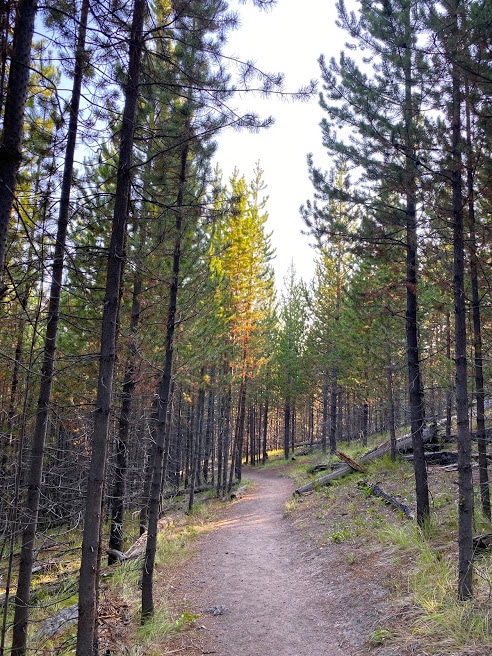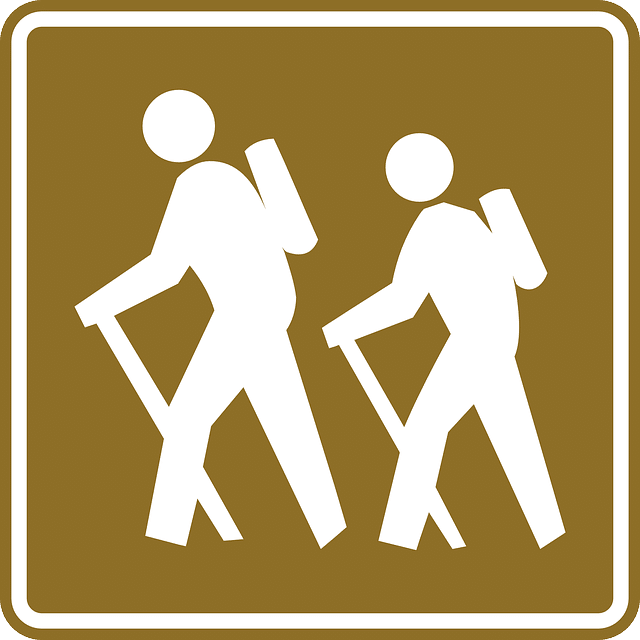Outdoor hiking is a fantastic way to experience the outdoors and it may be much simpler than you think. Hiking doesn’t have to mean climbing mountains or teetering on cliffs, it just means walking and experiencing nature on any kind of trail.
This can be as simple as exploring the dirt trails in your city park and venturing beyond the pavement in a national park.
Time wandering through nature has multiple physical and mental benefits and with a little preparation and some basic knowledge, hiking is an activity that almost anyone can do. Here are some tips to make your first hikes both safe and fun.
Start Small and Train For Outdoor Hiking

Your first hike may be a little intimidating, so start small and choose a trail that matches your level of fitness. A good rule of thumb is to choose a trail slightly shorter than the distance you normally walk on a treadmill or paved surface.
If you’re going to be hiking in a mountainous area, make sure to also look at elevation changes and the steepness of the trail. You may want to stick to less steep hikes when you’re first starting out.
Once you have a few hikes under your belt, you’ll have a sense of what kind of terrain and distances you’ll enjoy. Starting small will give you the experience and the confidence to eventually tackle longer distances and more difficult terrain if you so desire.
Find a Partner or Outdoor Hiking Group
(PIXABAY)
If you have friends or family members who enjoy hiking, ask them to take you out on a short and easy hike. Most people are thrilled to share their love of the trails with an eager new enthusiast. Fellow hikers are the best resources for gear advice and trail information.
If you don’t know anyone that hikes, many cities have hiking clubs that sponsor outings and events. Also, outdoor retailers such as REI and EMS, universities and environmental organizations sometimes offer hiking classes and sponsor group hikes.
Be Prepared With the 10 Hiking Essentials
(PIXABAY)
Before you hit the trail, you’ll want to make sure your backpack is packed with the essentials. The “Ten Essentials” is a collection of survival items recommended for safe travel on the trail by numerous hiking and climbing organizations.
The essentials include proper navigation tools, sun protection, extra layers, first aid supplies, a headlamp, firestarter, knife, extra food, extra water and an emergency shelter.
Not all these items are required when setting out for a short day hike, but it’s a good list to consult when considering what to bring on longer outings. The exact items you pack will be tailored to the trail you’re hiking taking into account how far you plan to travel, the weather and your distance from help should you need it.
Read More: How To Train For Hiking and Hike Faster
Always Tell Someone Where You’re Going
Always tell someone where you are going, what time you’re leaving, and when you are planning on being back. Often it’s difficult to estimate exactly what time you’ll be back home, so giving a “worry time” works for some for example, “don’t worry about me unless you don’t hear from me by sunset.”
This is especially important if you’re hiking by yourself, but also an important habit to get into even when hiking in a group.
Leaving a note with your detailed itinerary in your vehicle is also a good way to inform a search-and-rescue team of your route if they happen to come looking for you. Just don’t leave it for everyone to see or you might attract trailhead thieves.
Plan Ahead and Always Have a Paper Map

Hiking guidebooks and websites are great resources for finding trail information. Once you’ve selected a trail, you’ll want to review the trail description and obtain a map. Print out a trail description or take a screenshot and save it to your phone.
Cell service is not available in many hiking destinations so you don’t want to count on your phone for navigation purposes.
You’ll also want to familiarize yourself with the hike before you start so there are no real surprises. Is it a loop or an out-and-back? Are there any confusing intersections where you could potentially make a wrong turn? Understanding where you’re going and what to expect is key to enjoying your first few hikes.
Familiarize Yourself With Leave No Trace Ethics
If you start spending a lot of your time hiking, you’ll likely hear references to the phrase “Leave No Trace”. Leave No Trace is a set of practices to follow when recreating outdoors to minimize your impact and protect natural spaces.
They are not rules per say, but guidelines on how to best enjoy and protect our natural world. While most of us don’t set out to act in ways harmful to the outdoors, we may not be aware of how our actions may impact wildlife, water quality and vegetation.
Read More: 6 Key Tips for Hiking Safely
Leave No Trace ethics include the following seven principles: plan ahead and prepare, travel and camp on durable surfaces, dispose of waste properly, leave what you find, minimize campfire impacts, respect wildlife and be considerate of other visitors.
Familiarize yourself with these principles to help protect and preserve these natural spaces for others to enjoy.
Know the Basics of Trail Etiquette

With more and more people hitting the trails these days, being familiar with a few trail etiquette items can make for a more enjoyable experience. The first thing you need to know is that there is an official hierarchy on the trail.
Horses always have priority if you happen to be on an equine friendly trail, followed by hikers and then mountain bikers. Always step off the trail to let horses pass and mountain bikers should always yield to hikers.
Uphill traffic always has the right away and hikers should pass on the left. Some uphill hikers enjoy the rest stop and may signal downhill hikers to pass. Just be sure to let the person hiking uphill make the call.
If you’re approaching someone from behind, it’s always nice to shout out a friendly “Hi there.” or “Good morning,” to avoid startling them and oftentimes they will step aside and allow you to pass.
If you’re hiking with headphones or stopping to take photos along the trail, just make sure to periodically check your surroundings to make sure you’re not slowing down fellow hikers or blocking the trail.
Many people take to the trails to take a break from technology and the noises and business of daily life, so just keep that in mind if you’re listening to music or decide to take a phone call on the trail.
Realize It Is Totally Safe to Hike Alone
Not being able to find hiking partners is a huge barrier to getting out on the trail. If you’re sticking to well-traveled trails near your home or popular hikes in national parks there is no real reason you can’t hike alone even if you’re new to hiking.
Many experienced hikers also enjoy hiking alone – you can go at your own pace and stop whenever you want to. Hiking solo can give you a sense of adventure and freedom you can’t really find anywhere else.

